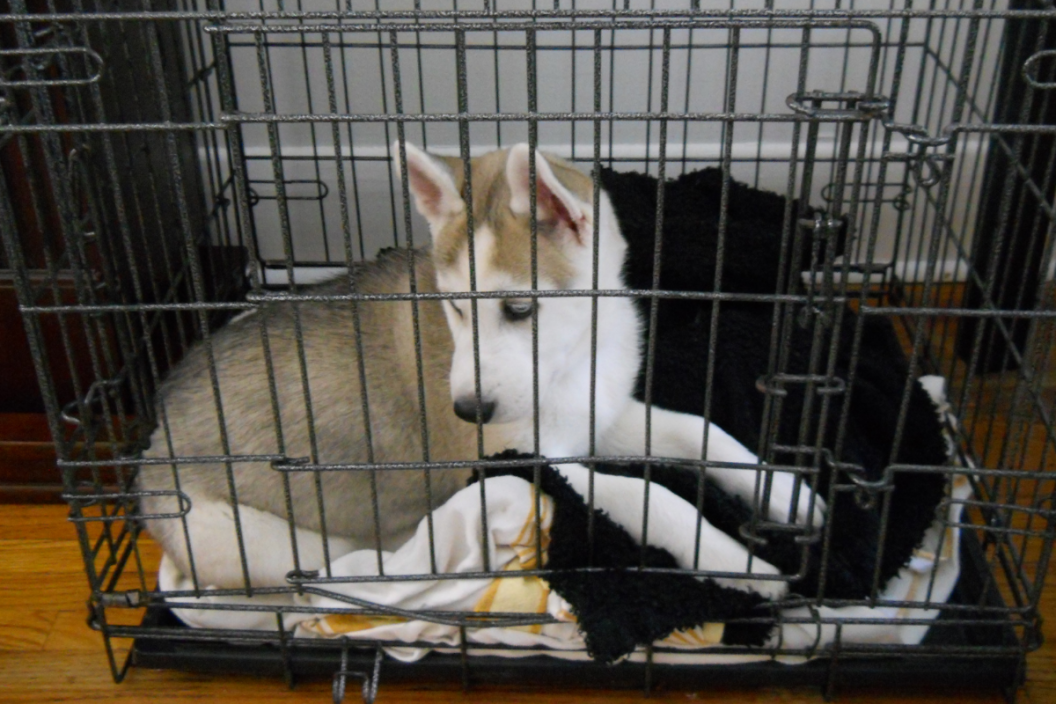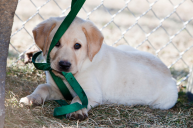Crate training is an important part of getting your new puppy adjusted to your home, but what if your puppy is crying in the crate? Are you a bad owner? Are they miserable? What can you do to stop the behavior?
Puppies can get themselves into many precarious situations, especially in new environments. One common way to get them settled is to crate train them. However, it can seem a bit intimidating for new pups, which causes them to start crying in the crate. Contrary to popular belief, crate training a puppy isn't cruel at all, but a necessary part of adjustment to a new home. A puppy's crate is supposed to be a safe space for them, so what can pet owners do to help their puppy get used to their safe space? Pets by Wide Open Media talked with Dr. Jamie Richardson, the Head of Veterinary Medicine at Small Door Veterinary, about the best way to help your puppy with crate training, especially when they are crying.
Why Is Crate Training Important?
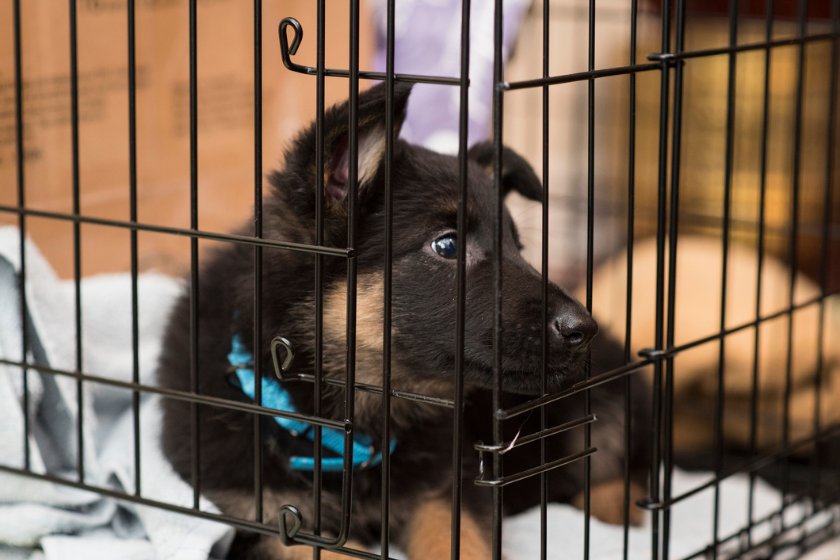
Crate training is commonly used for keeping dogs safe while their humans are not at home. Some pet owners think that placing a dog in a crate is cruel, but dogs actually like having their own small space. Dr. Richardson said via email that crate training has many benefits for humans and dogs.
"Primarily, it provides a safe space for your dog when you have to leave them unsupervised, preventing them from getting into any potential dangers (e.g., chewing something dangerous) before they've learned appropriate behaviors."
We have all seen videos of dogs tearing up their owner's homes while they are out. While those videos are amusing from the outside, no one wants to come home to that and the possible costly vet bill that can go along with it. Dogs can get themselves into a lot of trouble when left to their own devices, especially puppies.
Dr. Richardson says crates create a welcoming place for your dog: "It's also comforting for your pet to have a cozy, quiet 'safe space' that they know belongs to them and that they can retreat to if they're feeling anxious, overwhelmed, or even just tired! It can help to prevent separation anxiety when they're left alone."
Crate training can also prove to be helpful for potty training, especially at nighttime. "Animals do not like to urinate or defecate where they sleep, especially if it's a small space," Richardson said. "Crate training encourages your dog to "hold it" until you're able to take them to an established elimination spot."
Many young puppies, and even adult dogs, might need a potty break during the middle of the night, especially if your puppy is working on potty training. Typically, a two-month-old puppy can hold it for three hours or so. As your puppy gets older, they will be able to hold it for longer and longer, but you never want to make your dog "hold it" for too long since that can be very unhealthy for them. So, be mindful of when your pup may need a bathroom break.
How To Stop a Puppy From Crying in Their Crate
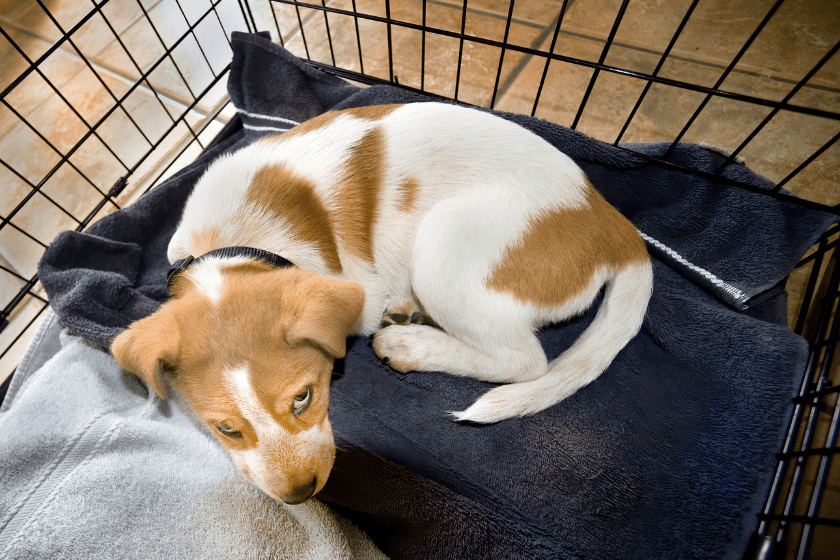
RELATED: Diggs Revol Dog Crate vs. Fable Crate: Which Pick Is Best for Pooches?
Puppy whining from the crate? Dr. Richardson says that you should "do your best to ignore 'bad crate behavior,' such as vocalization, whining, and scratching."
"Do not acknowledge this behavior or let them out in response because it will teach them that whenever they want to be let out of the crate, they should repeat this undesirable behavior," Richardson said. In addition, acknowledging this behavior can lead to bad habits. Obviously, your puppy may be whining for a reason, other than the fact that they do not like the crate and want to join you in the family room. However, Richardson says that you should "wait until there is a brief pause in their whining, and then let them out. This also helps them learn to self-soothe."
To help your puppy sleep in its crate, you will also want to make sure that the crate is comfortable for your new pup.
Making a Crate Comfortable
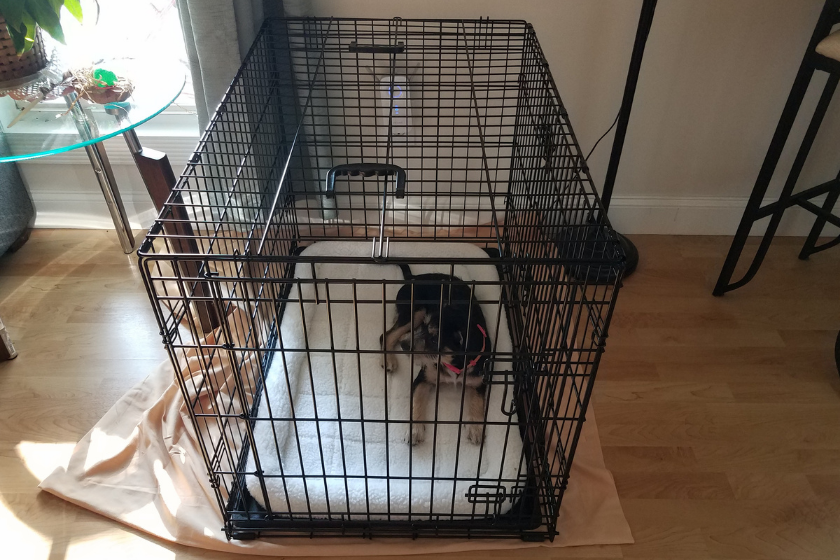
Your new puppy needs to feel comfortable during crate time. Dr. Richardson recommends lining the crate with a comfy dog bed or multiple blankets. To make a puppy feel like they are at home, you can also add in a favorite toy or an old t-shirt that has your smell on it. If you are using a wire crate, Dr. Richardson recommends placing a blanket over it to make it darker, but make sure it still has proper ventilation. Make sure it is in the best spot, too. Richardson suggests, "You should place the crate in a quiet, calm part of your home, where there's not a lot of activity. A calm corner, a den, spare bedroom, or area with no windows may be ideal." Placing your dog's crate in the middle of a noisy living room will not promote a calm environment, though it might be tempting to keep your pup close for their first night in a new home. Dog training begins the moment your pup enters your home. So set them up for success by establishing a useful routine from the beginning.
There is no best dog crate for a dog. It is more up to personal preference. However, Dr. Richardson says that you need to choose the correct size for your dog. If you have a small puppy, you do not want to place them in a large crate. "For growing puppies, you could consider putting up a divider panel to make the space small enough so that they're not tempted to do their business inside," said Richardson. Puppies should be able to stand up and turn around with the crate door closed, but that is about it.
Conversely, you do not want the crate to be so small that they feel claustrophobic. Instead, Richardson says you want your puppy to feel cozy: "Never force your dog into the crate. This will create a negative association with the crate, and they'll resist it even more strongly. The crate should be a safe space for your pet where they can rest; they should want to go there."
If your puppy does not want to go into their crate, put some of their chew toys inside or maybe their kong so they can start to build some positive associations with the dog kennel. Instead of feeding them outside of the crate, Richardson suggests placing their food bowls inside the crate to associate it with something positive.
Separation Anxiety in Dogs
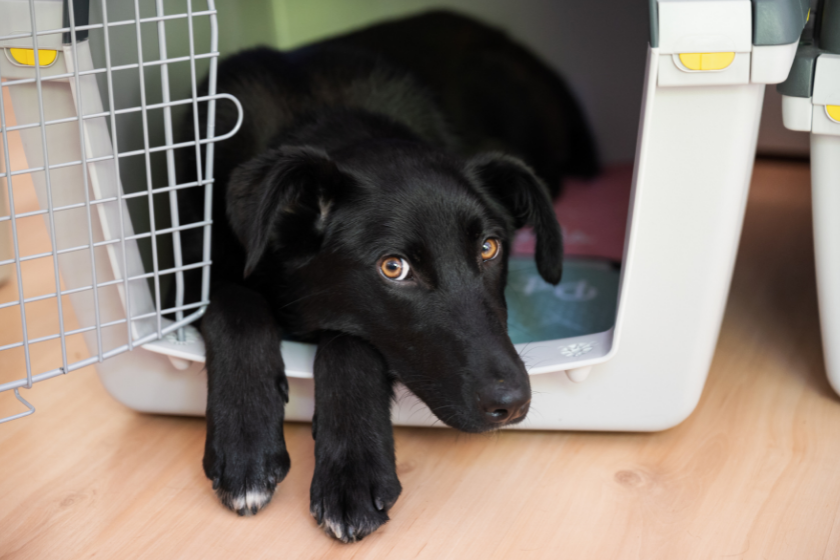
Puppy owners know that there can be a bit of separation anxiety when a puppy comes home for the first time; it is likely the first time your pup has been away from its littermates. They spent months together with their siblings and mom, either with their breeder or at a shelter. Now, they are all alone without a sibling or their mom to cuddle with, which can lead to crying and whining in their crate. It may take a couple of weeks for your new pup to get a handle on house training and their crate training. In the meantime, they will spend a lot of time with you and become rather attached.
To promote sleeping in their own bed, you want to start crate training when you bring your puppy home. Dr. Richardson said, "Start slowly and always try to work at a sub-threshold level for best results."
"Stay right next to the crate, to begin with, and slowly move further away within the same room, where they can see you. When they seem comfortable with that, you can start leaving the room for short periods of time."
She also said that if your puppy is very anxious, you can try calming dog collars. "These collars release pheromones that have a soothing effect," said Richardson.
How did you stop your puppy from crying in its crate? Tell us on our Wide Open Pets Facebook page.
